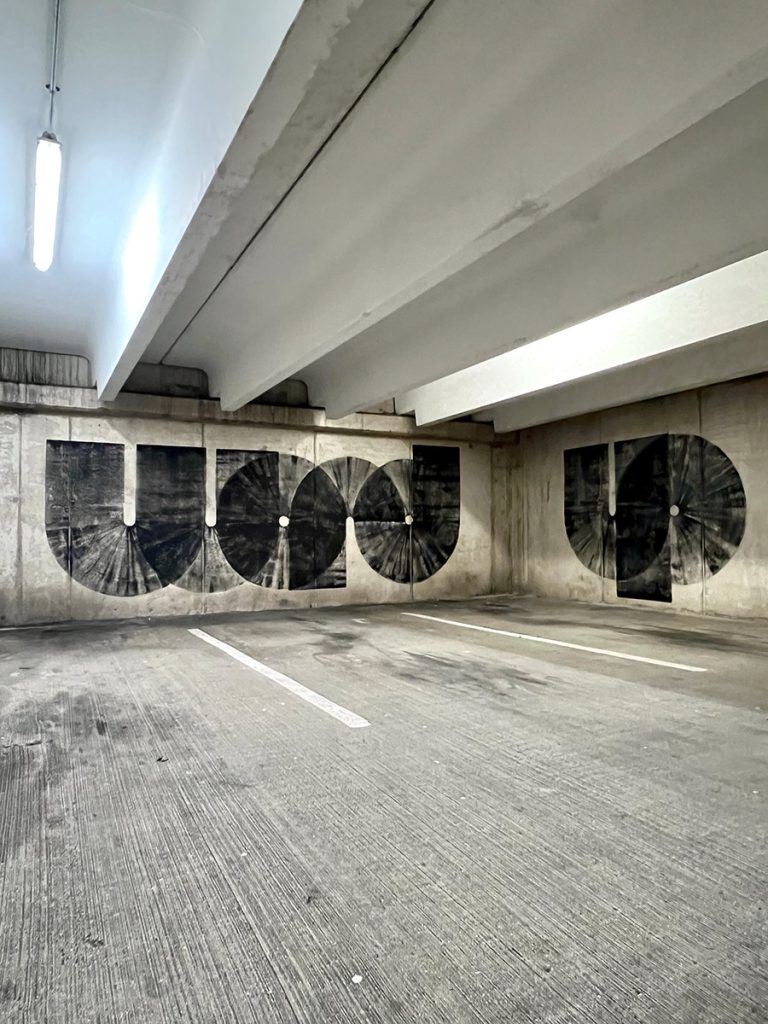
Borondo’s “Chrysalis” Exhibition delves into Concepts of Change at Villa Stuck in Munich

**Borondo’s “Chrysalis” Exhibition Investigates Themes of Change at Villa Stuck in Munich**
Spanish artist Gonzalo Borondo’s newest exhibition, titled *Chrysalis*, has debuted at the esteemed Villa Stuck in Munich, providing guests with an immersive and intellectually stimulating experience focused on the idea of transformation. Renowned for his expressive and frequently transient installations, Borondo infuses his distinct combination of traditional artistry and modern expression into the historic museum setting, intertwining cultural, psychological, and environmental stories.
**A Symbolic Transformation**
*Chrysalis*, which refers to the pupal phase in a butterfly’s lifecycle, acts as a symbol for both individual and communal transformation. Borondo harnesses this profound symbol to investigate transitions—both corporeal and spiritual. The exhibition meditates on change as an essential and at times unsettling journey that fosters growth and rejuvenation.
Scattered throughout the lavish yet somber chambers of Villa Stuck—a building that exemplifies artistic change—the exhibition integrates effortlessly with the museum’s design and historical background. The site-specific installations converse with the space, revitalizing the classic and Jugendstil interiors of the villa. Through this, Borondo not only contemplates transformation but performs it within the actual confines of the institution.
**Multi-Sensory Installations**
In *Chrysalis*, Borondo employs a variety of mediums such as painting, sculpture, video projection, and sound. His installations transition from one room to another, leading visitors on a quasi-ritualistic exploration. Attendees encounter haunting silhouettes carved into glass, fragmented human forms, deteriorating structures, and mirrors that invite introspection. Each artwork ponders themes such as identity, decay, rejuvenation, memory, and the interaction between nature and urban environments.
One of the most compelling features of Borondo’s creations is his incorporation of natural materials—wood, stone, earth—and his fascination with their evolution over time. In *Chrysalis*, these elements serve as symbols for vulnerability and strength. Organic textures transform into visual representations of skin, bark, cocoon, and shell—layers to be both discarded and embraced.
**Context and Collaboration**
Borondo’s *Chrysalis* functions not merely as an exhibition but as a dynamic entity that evolves alongside its environment. He collaborated with local artisans, sound designers, and curators to craft an all-encompassing experience. The sounds of fluttering wings, dripping water, and swaying leaves, for example, are incorporated into the experience by the sound collective S13, subtly evoking the perpetual flux of existence.
The choice to host the exhibition at Villa Stuck—formerly the residence and studio of artist Franz von Stuck—adds an additional dimension to the narrative. Von Stuck was known for his interest in mythological and symbolic imagery, making the villa a perfect backdrop for Borondo’s investigation of metamorphosis. The temporal tension between the 19th-century style and Borondo’s modern contributions prompts visitors to reconceptualize past and present as a continuous cycle of transformation.
**Environmental and Social Undertones**
Beyond the introspective and psychological aspects, *Chrysalis* engages with contemporary issues surrounding ecological transformation and urban disconnection. Borondo subtly alludes to the deterioration and evolution of our natural environment, urging contemplation on humanity’s position within these changes. As climate crises persist and societal norms are redefined, *Chrysalis* serves as a reflection for collective self-examination—a reminder that transformation is not only unavoidable but essential.
**Critical Reception and Legacy**
The exhibition has received critical praise since its launch, with numerous commentators lauding Borondo’s capacity to create an emotional and philosophical bond between the artworks and viewers. Critics emphasize his talent in weaving a narrative that is both profoundly personal and universally relatable.
Similar to many of Borondo’s site-specific endeavors, *Chrysalis* is intended to be ephemeral, underscoring the fleeting nature of transformation itself. Its transience resonates with the exhibition’s central theme: nothing remains static, and therein lies beauty and possibility.
**Conclusion**
*Chrysalis* epitomizes Borondo’s exceptional ability to convert space into an experiential odyssey of change. With its poetic imagery, innovative materials, and immersive setting, the exhibition at Villa Stuck invites everyone who enters to reflect on their individual cycles of transformation. Whether interpreted as a narrative of personal renewal, societal advancement, or environmental accountability, *Chrysalis* provides a profound meditation on the intricate, often challenging, yet ultimately hopeful journey of transformation.